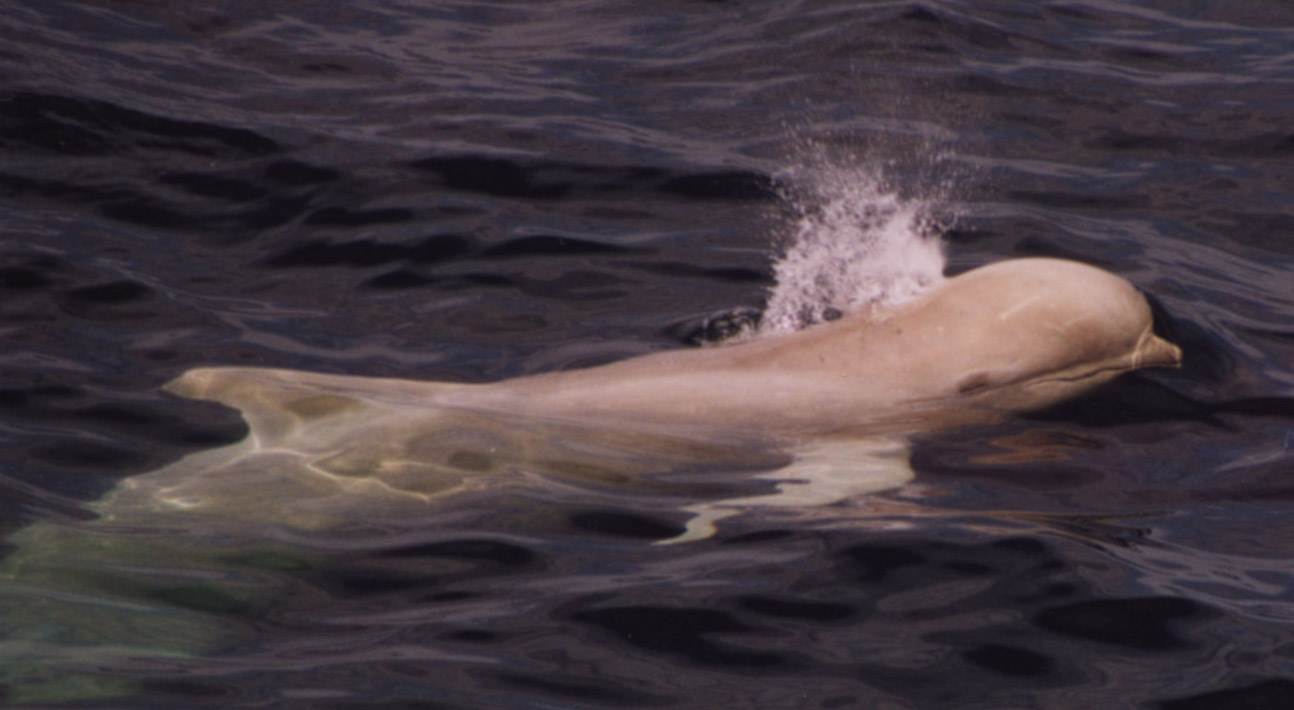|
For the past several weeks, a “pink” dolphin off the coast of Louisiana has received much attention thanks to an article by Caters News Agency in the UK Guardian. The dolphin, first sighted as a calf in 2007 is, in fact a pink bottlenose dolphin, which are normally gray in color.
 Albino Pilot Whale Calf/WDCS Albino Pilot Whale Calf/WDCS
The pink is a result of a lack of pigmentation in the skin, a condition known as albinism. Albinism is studied extensively in humans but not in cetaceans (whales, dolphins and porpoises) mostly because it is rarely documented in cetaceans. To date, it has been documented in about 20 different cetacean species including sperm whales, pilot whales, humpback whales, and bottlenose dolphins.
In humans, there are many types and degrees of albinism (lack of pigmentation) from those that impact only eye color (pink from lack of pigment) to hypopigmentation in the hair, skin, and eyes.
While this animal looks pink, it is an albino (lacking proper pigmentation), hence the pink eyes. Albinism is a genetic trait and it unclear as to the type of albinism this animal inherited. Most types of albinism in humans do not largely impact lifespan and people impacted lead relatively normal lives. Causes for concern are a substantially higher risk of skin cancer, poor vision and, for wild animals, potentially higher risk of predator attack (they stand out more easily) or alienation from social/mating groups (they may not "look" as attractive).
It is unclear as to what the issues are regarding albinism in cetaceans. For whales and dolphins, vision is generally not as important of a sense as is hearing- so poor vision may not impede the animals ability to survive. Skin cancer and sunburn may be an issue for an animal in a shallow coastal habitat but cetaceans typically spend >80% of their time under water. It is unlikely that the pink coloration in this animal is due to sunburn, but more likely the degree of pigmentation loss and the degree of blood vessels near the surface of the tissue.
Probably the bigger issue of concern with albino cetaceans is from the additional attention these animals may get from humans. As a noticeably "different" looking animal, they are more likely to get targeted by people wanting to see them. Constant disturbance can lead to reduced opportunities to forage, direct risks from vessel strikes, and stress (which can lead to a series of medical issues just as in humans).
Ironically, belugas, which are naturally white, do not have pink eyes and are not albino. And neither are the true pink dolphins, the Amazon River dolphins, or boto, which are found in South America.
According to WDCS Senior Biologist, Regina Asmutis-Silvia, “It is a truly beautiful dolphin but people should be careful, as with any dolphins, to respect it- observe from a distance, limit their time watching, dont chase or harass it.” Dolphin SMART provides general guidelines for watching dolphins. For more information, please see the NOAA fact sheet for this animal.
WDCS thanks the Caters News Agency for photos and access to their article. Please Contact Caters directly for photos of the dolphin. |